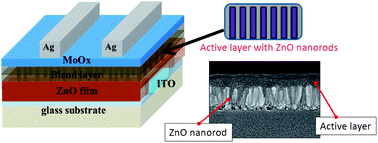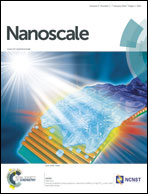ZnO nanorod arrays for various low-bandgap polymers in inverted organic solar cells†
Abstract
Due to the limited diffusion length of carriers in polymer solar cells (PSCs), the path of carriers is a crucial factor that determines the device performance. Zinc oxide nanorods (NRs) as the electron transport channel can reduce electron–hole recombination and transport the electron to the electrode efficiently for poly(3-hexylthiophene) (P3HT), but have been seldom demonstrated for low-bandgap polymers. Here we successfully applied ZnO NRs, which were grown via the hydrothermal method, as a platform to enhance PSC efficiency for various low-bandgap polymers. In order to assure that the nanorod morphology functioned properly for PSCs, the growth time, the concentration, and the resulting morphology were systematically investigated in depths. Such ZnO NRs were applied to different organic systems, resulting in the increase of the PCE for PBDTTT-C/PC71BM from 4.76% to 6.07% and PBDTTT-C-T/PC71BM from 5.40% to 7.34%. Through those experiments, we established a potentially universal and efficient ZnO NRs platform for various low-bandgap polymers to achieve high efficiency of inverted PSCs.


 Please wait while we load your content...
Please wait while we load your content...